Automatic Cluster Formation with Akka.Management
Akka.Management is a toolkit for managing and bootstrapping Akka.NET clusters in dynamic environments. It provides HTTP endpoints for cluster coordination, integrates with Akka.Discovery for service discovery, and enables safe, automated cluster formation using Cluster Bootstrap.
Video: Form Akka.NET Clusters Dynamically with Akka.Management and Akka.Discovery
Watch this companion video for a visual walkthrough of dynamic cluster formation using Akka.Management and Akka.Discovery.
How Akka.Management Works
Akka.Management exposes a set of HTTP endpoints that allow nodes to:
- Advertise their presence
- Query the status of other nodes
- Coordinate cluster formation and joining
It works in tandem with Akka.Discovery plugins (such as Azure, AWS, Kubernetes, or config-based) to dynamically discover available nodes in the environment. Cluster Bootstrap then uses this information to safely form or join a cluster, replacing the need for static seed nodes.
Cluster Formation Process
The following images illustrate the cluster formation process with Akka.Management and Akka.Discovery:
1. Static Seed Nodes (Traditional)
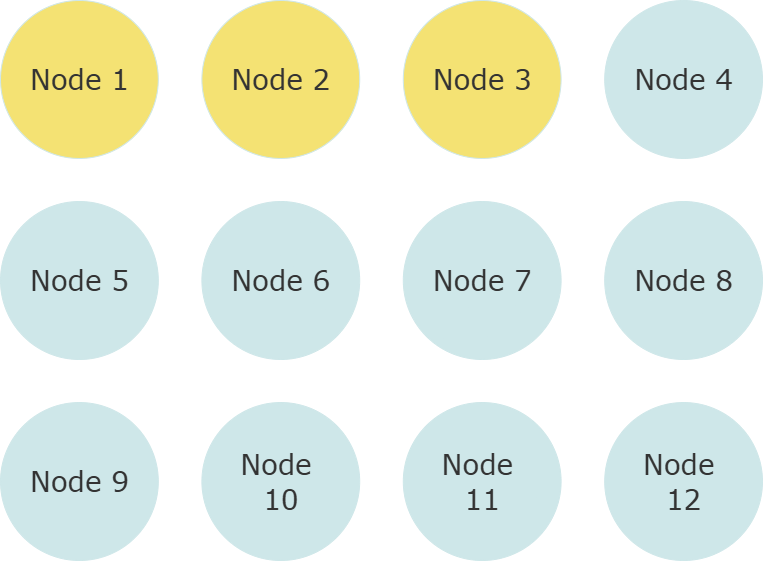
In the traditional model, nodes use a static list of seed nodes to form the cluster. Akka.Management is not involved; cluster formation depends on the availability of these pre-configured nodes.
2. Split Brain Scenario
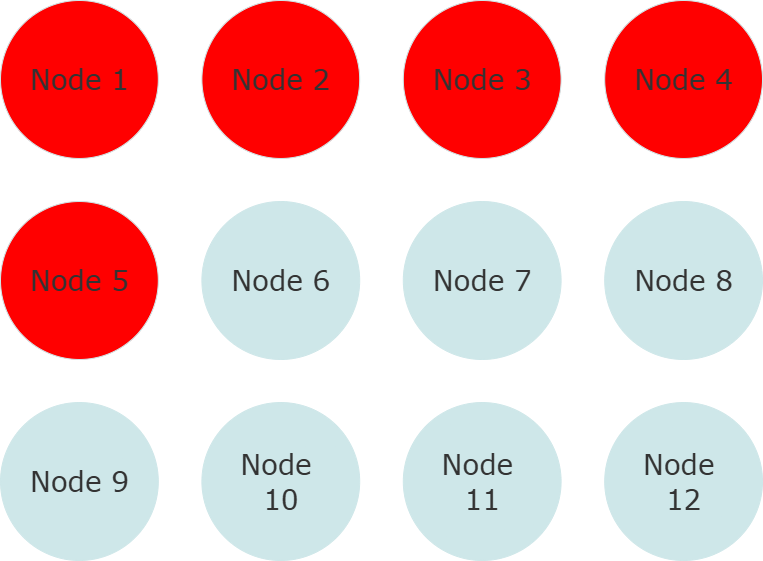
If a network partition occurs, static seed nodes can lead to split-brain scenarios, where two separate clusters form. Akka.Management is not present to coordinate or prevent this; recovery is manual and error-prone.
3. Dynamic Discovery Startup
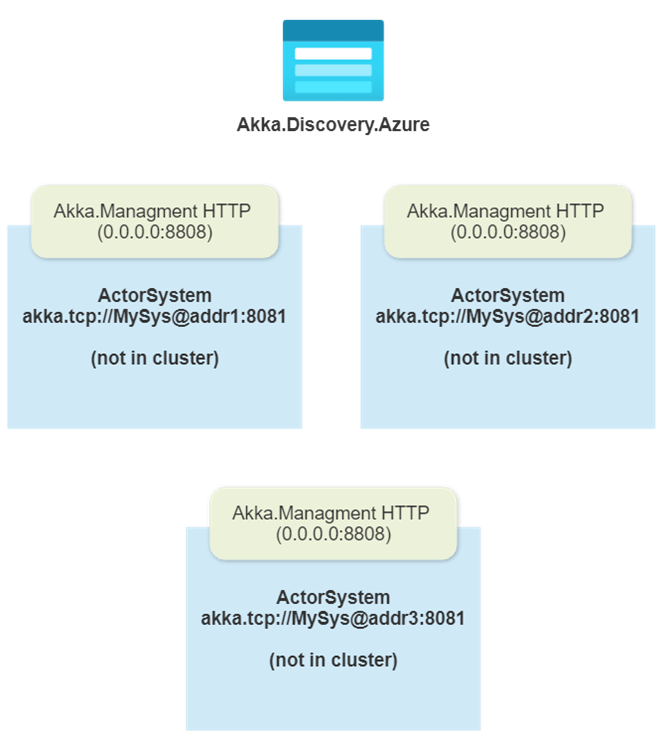
With Akka.Management enabled, nodes start up and register themselves using the configured Akka.Discovery plugin (e.g., Azure). Akka.Management exposes HTTP endpoints for each node, making them discoverable to others.
4. Discovery Pinging
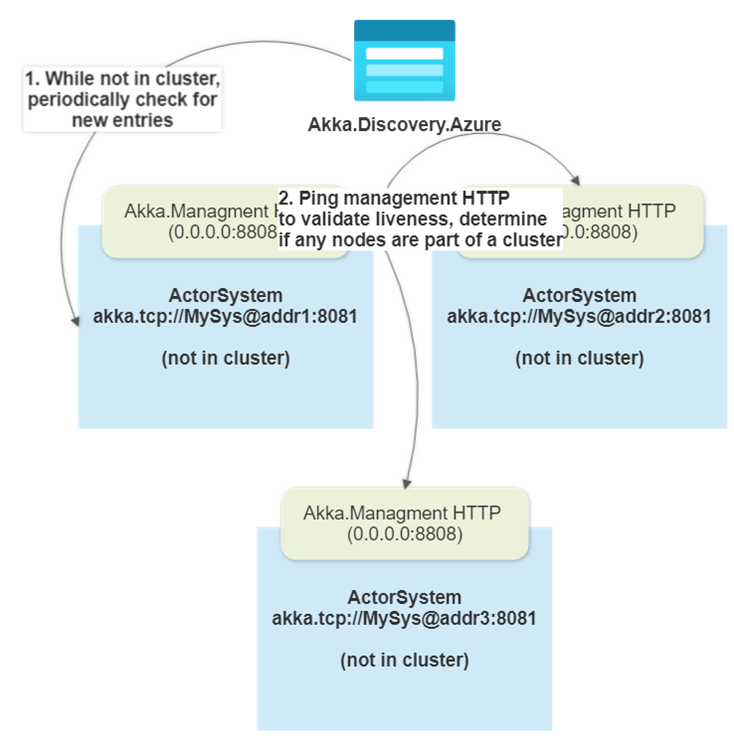
Akka.Management and Cluster Bootstrap query the discovery backend for available nodes. Each node pings the HTTP endpoints of discovered peers to verify their presence and readiness to join a cluster.
5. Cluster Forming
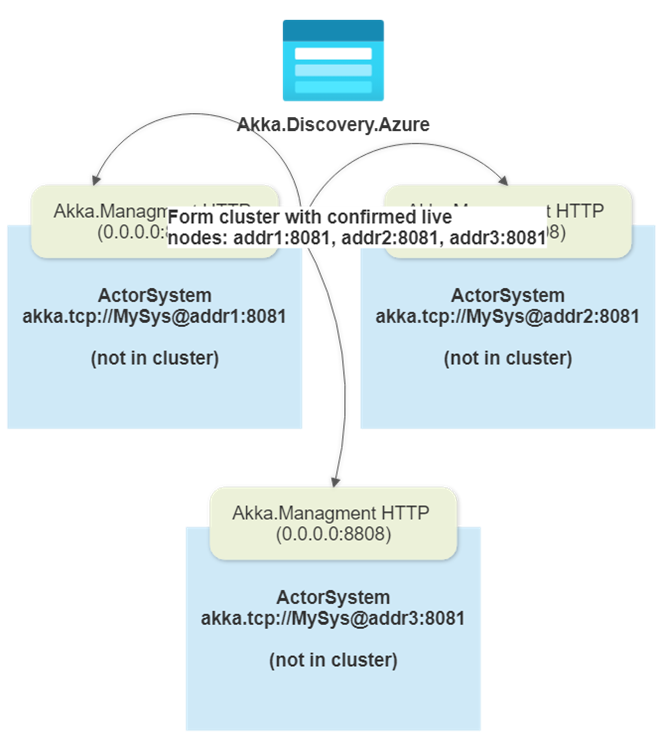
Once the required number of contact points are verified and reachable, Akka.Management and Cluster Bootstrap coordinate the safe formation of a new cluster. Nodes agree on membership and begin the cluster join process.
6. Fully Formed Cluster
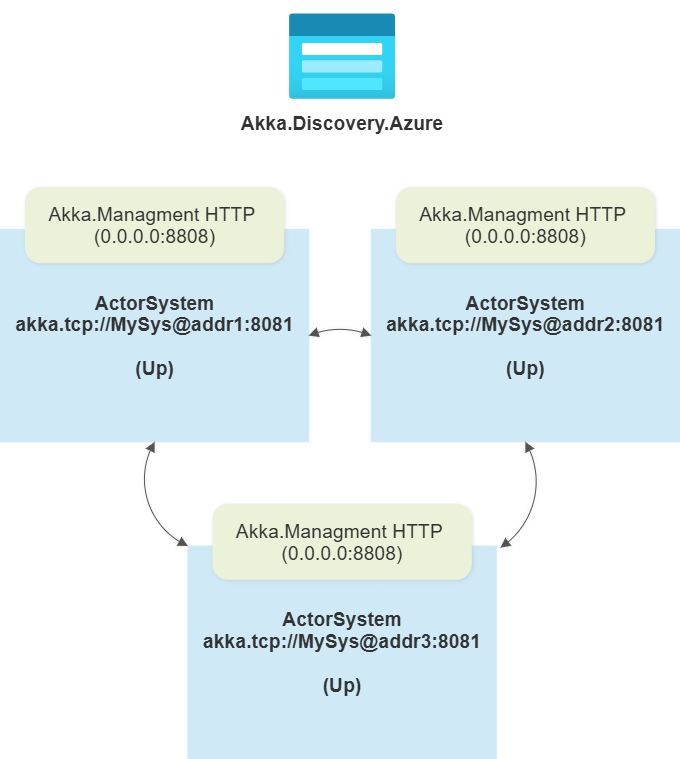
The cluster is now fully formed. Akka.Management continues to monitor node health and membership, enabling dynamic scaling and recovery as nodes join or leave the cluster.
Practical Usage
- Always clear out static
SeedNodeswhen using Akka.Management and Cluster Bootstrap. - Use a supported Akka.Discovery plugin for your environment (Azure, AWS, Kubernetes, etc.).
- Set
requiredContactPointsto a safe value (never 1) to avoid split-brain scenarios. - Use Akka.Hosting for modern, type-safe configuration.
Example Configuration with Akka.Hosting
akkaBuilder.WithRemoting("0.0.0.0", 4053);
akkaBuilder.WithClustering(new ClusterOptions
{
SeedNodes = Array.Empty<string>(),
Roles = new[] { "backend" }
});
akkaBuilder.WithAkkaManagement(port: 8558);
akkaBuilder.WithClusterBootstrap(
serviceName: "my-akka-service",
portName: "akka-remote",
requiredContactPoints: 3
);
akkaBuilder.WithAzureDiscovery(options =>
{
options.ServiceName = "my-akka-service";
options.ConnectionString = "<your Azure Table Storage connection string>";
});
Running Clustered Nodes on a Single Machine
When developing or testing, you may need to run multiple Akka.NET nodes on the same host. Manually assigning distinct remote port for each process can work for a fixed seed-node strategy, but doing so for management ports would not work with Akka.Discovery and Akka.Management.Cluster.Bootstrap.
Cluster.Bootstrap expects that all hosts have the same management port. When Akka.Discovery returns a list of open ports on a host, the bootstrap coordinator will filter out any ports that are different from the locally configured management port, ignoring the rest.
To allow each host to advertise its own management port without filtering each other out, disable fallback-port filtering:
builder.WithClusterBootstrap(setup =>
{
setup.ContactPoint.FilterOnFallbackPort = false;
});
akka.management {
cluster.bootstrap {
contact-point {
# allow discovery to return multiple ports per host
filter-on-fallback-port = false
}
}
}
 Edit this page
Edit this page